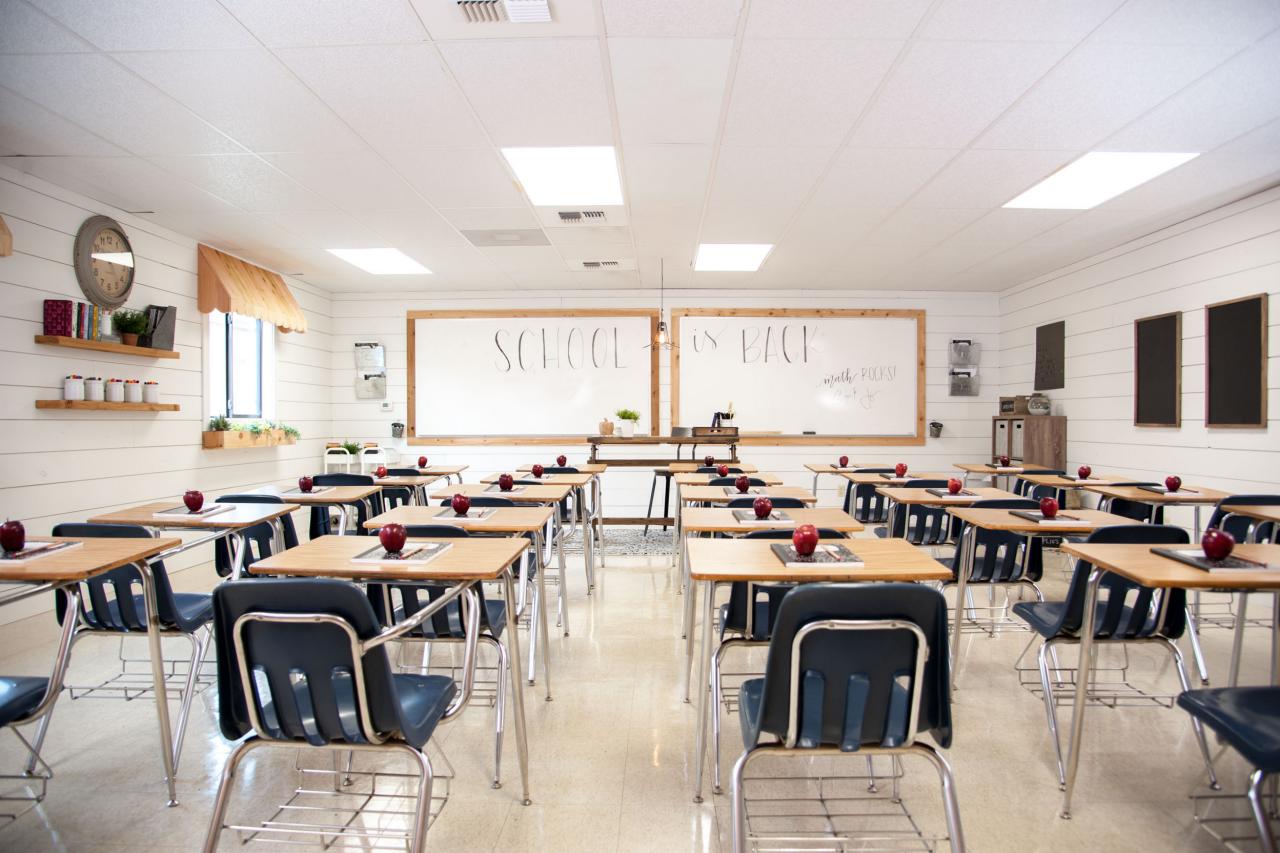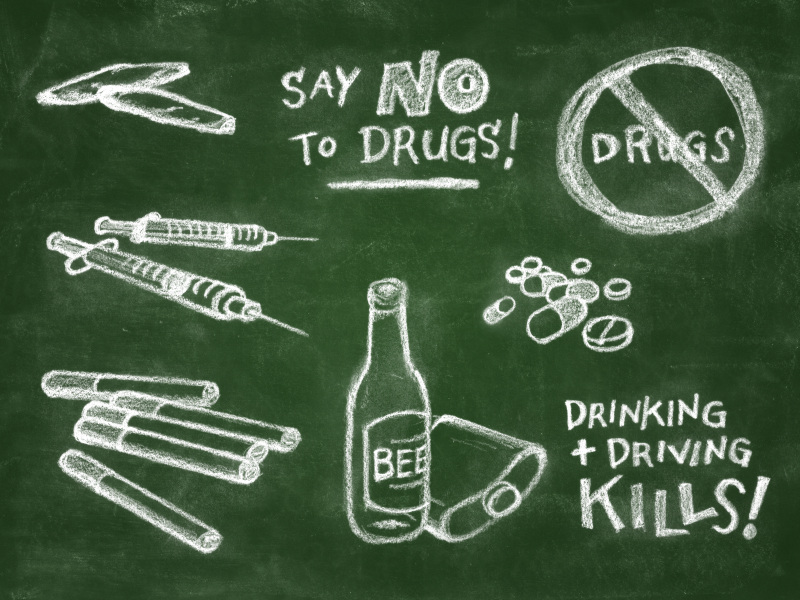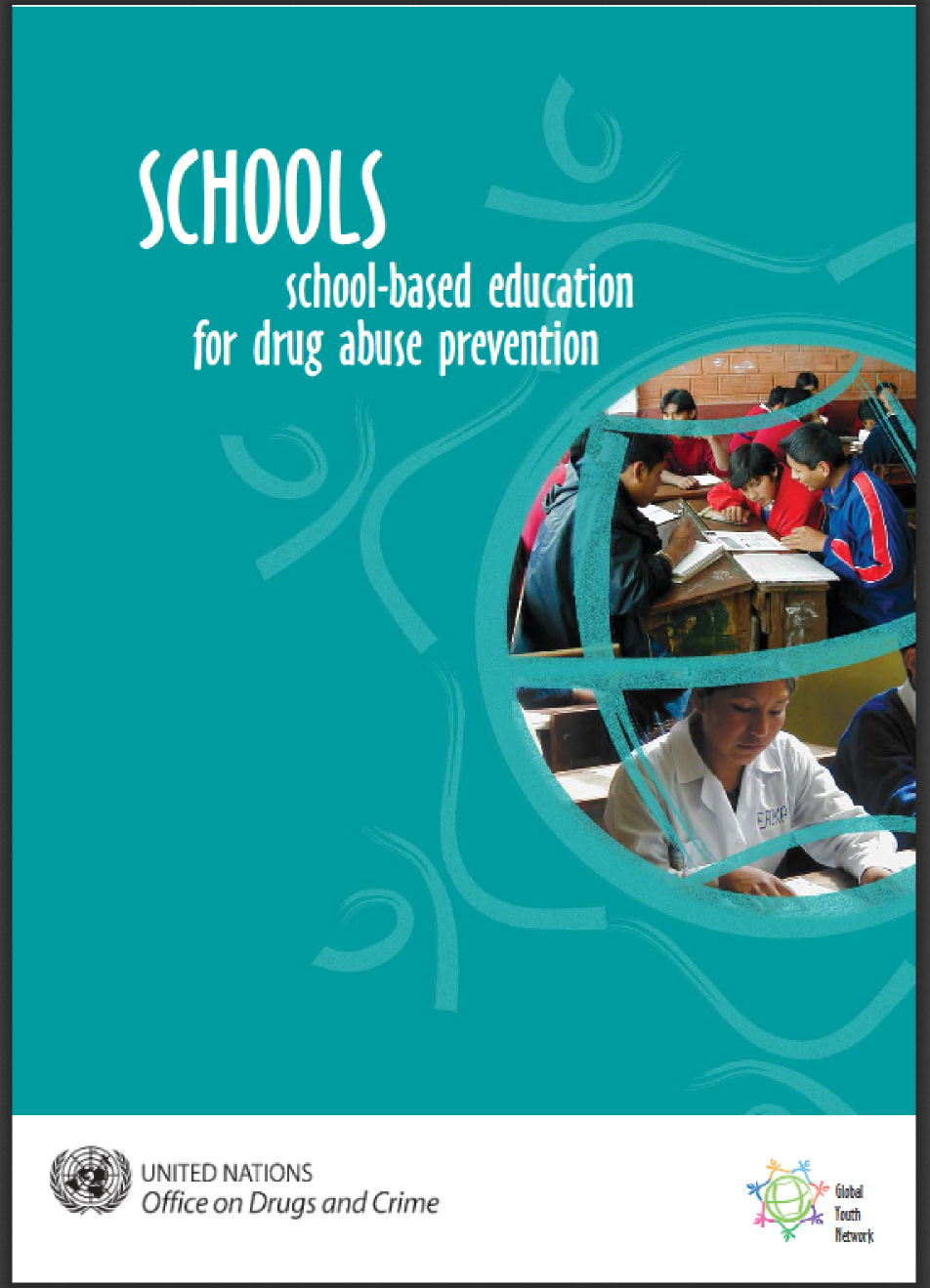
Disturbingly high levels of illicit drug use remain a problem among American teenagers. As the physical, social, and psychological “home away from home” for most youth, schools naturally assume a primary role in substance abuse education, prevention, and early identification.
Educator and School Administrator Resources

Schools are appropriate settings for drug prevention programs for 3 reasons:
- Prevention must focus on children before their beliefs and expectations about substance abuse are established;
- Schools offer the most systematic way of reaching young people; and
- Schools can promote a broad spectrum of drug-related educational policies.
Basic Understanding of Addiction

Many people don't understand why or how other people become addicted to drugs. They may mistakenly think that those who use drugs lack moral principles or willpower and that they could stop their drug use simply by choosing to.
In reality, drug addiction is a complex disease, and quitting usually takes more than good intentions or a strong will. Drugs change the brain in ways that make quitting hard, even for those who want to. Fortunately, researchers know more than ever about how drugs affect the brain and have found treatments that can help people recover from drug addiction and lead productive lives.
- What Is drug addiction?
- What happens to the brain when a person takes drugs?
- Why do some people become addicted to drugs while others don't?
- Can drug addiction be cured or prevented?
To learn about the these four addiction topics on NIDA Click Here.
School administrators often feel helpless against substance abuse within their schools and by their students. However, administrators can influence behaviour. The way they do it is through the development of knowledge and skills and the cultivation of values in their students throughout their school systems. Administrators have it in their power to improve student knowledge and skills and to encourage the development of defensible values which prevent substance abuse of all types.

Drug addiction is a chronic, often relapsing brain disease that causes compulsive drug seeking and use, despite harmful consequences to the drug addict and those around them. Drug addiction is a brain disease because the abuse of drugs leads to changes in the structure and function of the brain. Although it is true that for most people the initial decision to take drugs is voluntary, over time the changes in the brain caused by repeated drug abuse can impair a person's self-control and ability to make sound decisions, and at the same time create an intense impulse to take drugs. Click Here to Learn more about Drug Abuse, Addiction, and the Brain on WebMD.

The Importance of Educating School Staff
Students spend the major part of their day in school. The school environment provides a standard against which young people test behavior.(1) School personnel often serve as highly influential role models by which preadolescents and adolescents judge themselves. Adolescents who perceive that their teachers care about them are less likely to initiate marijuana use, cigarette smoking, drinking to get drunk, and other health risk behaviors.(2) Relationships with teachers and counselors are among the most important and formative ones for many students, especially middle school students.(2) Students who are poorly bonded to school are also less likely to recognize that substance use may reduce the likelihood of them achieving their future goals.(3)



NIDA’s Lesson Plan and Activity Finder is an online searchable database of more than 70 teacher materials on the effects of drugs and drug abuse on the brain, body, and life of teens. The materials—funded or created by NIDA—include science-based classroom lesson plans, multimedia classroom activities, and other teaching resources for grades 5–12.
The resources:
- Align with national science and education standards.
- Supplement and complement school curricula.
- Foster deeper engagement around drug use topics.

Manual: School-based education for drug abuse prevention
Schools do not have it in their power to stop smoking, drinking, sex or poor eating patterns. They do have it in their power to improve student knowledge and skills and to encourage the development of defensible values. Equally, they should not be blamed when students engage in health behaviour that is less than desirable. They should be blamed, or at least held accountable, if students do not gain essential knowledge and skills regarding health, and cannot articulate a value position.
Changing Organizational Practices – Drug Free Workplace Commitment In Your Schools

Drug and alcohol abuse can take a heavy toll on the workplace and school districts are not immune.
Substance abusers are much more likely to miss work, be less productive, be involved in an on-the-job accident, injure themselves or others, and file workers’ compensation claims. They can affect other employees who have to fix their mistakes.
What is a "Drug Free Workplace?" in general?
It is an employment setting where all employees adhere to a program of policies and activities designed to provide a safe workplace, discourage alcohol and drug abuse and encourage treatment, recovery and the return to work of those employees with such abuse problems. The intent of the program is to educate adults on the problems relating to substance abuse. The one place where there can be mandated adult education is the workplace. This empowers the individual and the family, resulting in stronger communities.
Why Should A School District or School Establish a Comprehensive Drug Free Workplace Program?
Current research indicates that nearly 77% of illegal drug users are employed in full and part-time jobs. Consequently, when the effects of alcohol abuse are added, the result is a large impaired portion of the national workforce. For the typical employer, that means unhealthy employees, unsafe working conditions, loss of productivity, smaller profits, more accidents, higher medical claims expenses, and a host of other negative effects for the employer and the employees.
What Are the Components of a Comprehensive Drug Free Work Place Program?
A comprehensive approach to having a drug free workplace would include:
- A written policy
- Access to assistance
- Employee education
- Supervisor training
- Drug testing
Click Here to learn more about how to implement a Drug Free Workplace
LEAD BY EXAMPLE!

Strategies to Prevent the Use and Access of Alcohol, Tobacco, and Other Drugs at School (Drug Free Schools)
UN School-based education for drug abuse prevention handbook (86 pages)
This publication does not offer a pre-packaged programme of education for drug abuse prevention that can be picked up and implemented. It is, rather, an attempt to provide a conceptual basis upon which teachers, policy makers and school administrators can make decisions about school-based drug prevention programmes in order to achieve greater success in educational terms. Content includes:
- Schools and drug abuse prevention
- Guiding principles for school-based education for drug abuse prevention
- Planning a drug abuse prevention program
- Teaching resources and strategies
- School, classroom, community and home influences
- Evaluation and assessment of the drug abuse prevention programs
- Teacher training and technical support programs
- Managing drug-related incidents
- Counseling and referrals
How To Identify That Alcohol, Tobacco, and Other Drugs Problem Is Happening In Your School

Early Intervention Is Key
In early adolescence, when children advance from elementary through middle school, they face new and challenging social and academic situations. Often during this period, children are exposed to abusable substances such as cigarettes and alcohol for the first time. When they enter high school, teens may encounter greater availability of drugs, drug use by older teens, and social activities where drugs are used more often.
Identifying and Confronting Students at Risk
Students may confide in you about problems they experience, or because of your frequent interaction with the students, you may recognize that they are having problems. You have the ability and opportunity to offer assistance to the students. This simple gesture may be all it takes for the student to seek help.
Most students are experiencing freedom and independence for the first time. With this freedom may come experimentation with alcohol and other drugs. Students may make high-risk drinking choices which put them at risk for alcohol-related impairment and health problems. The use of illicit substances is always high risk and dangerous. Students may not be able to recognize the potential dangers and consequences of their decisions.
Identifying Signs of Abuse
In order to offer assistance, it is necessary to be familiar with the signs and symptoms of an alcohol or other drug problem. It is important to remember that you are not expected to be an expert in this area, nor are you expected to be able to diagnose a student’s problem. The first step in helping a student is simply to recognize that a problem may exist. Some of the signs include the following:
- Appearing under the influence during class
- Smelling of alcohol during the day
- Missed coursework or classes due to alcohol or other drug use
- Preoccupation with alcohol and other drug use, which may be evident in conversation or course papers
- Changes in academic performance
- Changes in mood or behavior
- Getting into fights or becoming aggressive while under the influence
- Inability to control drinking; drinking more than intended; inability to have just one or two drinks
- Increase in tolerance to alcohol use
- Trouble with police or university officials because of alcohol or drug use
- Expressed concern from others because of the usage
- Blackouts (loss of memory) from alcohol or drug use
- Drinking or drug usage as a main priority

Steps for Intervention
Intervention is a proactive method used to increase awareness of problem behaviors, prevent problems from becoming worse, and promote referral for further assessment and possible treatment. Intervention simply means meeting with a student and discussing your concern. The following are some tips for conducting an informal intervention:
- Select a private location.
- Let the student know that you are genuinely concerned.
- Describe to the student the specific behaviors that have caused you to be concerned,
- Speak to the student in an objective, unequivocal, nonjudgmental manner.
- Have resource information ready to provide to the student (see Prevention and Treatment Locations).
- Be prepared for the student to provide excuses, promise behavior change, attempt to redirect the conversation, or pass the problem off as no big deal.
- If possible, offer to assist the student in making the contact to the appropriate office or program that deals with alcohol and/or drug abuse.
Remember that even if the student refuses your help, you are an important part of the process in helping him/her recognize that there is a problem. If you are uncomfortable intervening with the student yourself but would still like to help, you can always contact school or board administrators for assistance.
ADDITIONAL RESOURCES - National Registry of Effective Prevention Programs (SAMHSA)
ADDITIONAL RESOURCES - Blueprints for Healthy Youth Development

Blueprints for Healthy Youth Development provides a registry of evidence-based positive youth development programs designed to promote the health and well-being of children and teens. Blueprints programs are family, school, and community-based and target all levels of need — from broad prevention programs that promote positive behaviors while decreasing negative behaviors, to highly-targeted programs for at-risk children and troubled teens that get them back on track.
Click here for a list of ALL Blueprints Model and Promising programs.
How to Use the Georgia Student Health Survey Data to do a Simple Needs Assessment
Understanding Needs Assessments
The phrase “needs assessment” is used rather loosely in the educational vernacular. As currently implemented, a needs assessment can mean anything from asking individuals connected with education what they need to close the gap between current status and some desired state, such as all students reaching proficiency, to conducting a comprehensive research project, complete with a specified set of procedures such as statistical analysis, case studies, and student focus groups. In both cases, there is an attempt to assess or measure a perceived or actual need by collecting data to document a hallenge that exists. For federal programs, typically this means that local staff must collect data that help illuminate the path to improvement.
Click Here to learn more about the needs assessment process.
Georgia Student Health Survey 2.0 (GSHS 2.0)
A growing body of research indicates that schools with positive school climate ratings have better test scores and higher graduation rates. School climate refers to the quality and character of school life. The first step to improving school climate is to measure and analyze it with a school climate survey instrument. The Georgia Department of Education (GaDOE) is a national leader in the collection and analysis of school climate data through the implementation of its annual Georgia Student Health Survey 2.0 (GSHS 2.0). The GSHS 2.0 is an anonymous, statewide survey instrument developed by many divisions within the GaDOE including the Assessment and Accountability Division and in collaboration with the Georgia Department of Public Health and Georgia State University. The GSHS 2.0 identifies safety and health issues that have a negative impact on student achievement and school climate. Click Here to learn more about the Georgia Student Health Survey 2.0.
Click Here to view 2008, 2009, 2010, 2011, 2012, 2013, 2014, 2015, 2016 and 2017 data.
The Importance of Community and Business Partners
Community Coalitions

The Role Of The Community
Because of the complexity of the ATOD problem, coordination of prevention messages and activities with other institutions, via community coalitions, in a youth's life in the community is essential in the overall prevention strategy. Schools must be actively involved in planning and coordinating community-wide activities that develop and strengthen anti-drug-use norms in the community and family as well as among peers, including public policy, media-created awareness, advocacy, and enforcement. Communities can be active in changing and supporting non-use-norms and reinforcing messages given at school. Many curricula have suggestions for integrating parent activities and information sharing.
Because of the complexity of the ATOD problem, coordination of prevention messages and activities with other institutions in a youth's life in the community is essential in the overall prevention strategy. Schools must be actively involved in planning and coordinating community-wide activities that develop and strengthen anti-drug-use norms in the community and family as well as among peers, including public policy, media-created awareness, advocacy, and enforcement. Communities can be active in changing and supporting non-use-norms and reinforcing messages given at school. Many curricula have suggestions for integrating parent activities and information sharing.
2016 Nationwide Teen Drug Use Statistics






Sources:
- Morrison GM, Robertson L, Laurie B, Kelly J. Protective factors related to antisocial behavior trajectories. J Clin Psychol.2002;58 :277– 290
- McNeely C, Falci C. School connectedness and the transition into and out of health-risk behavior among adolescents: a comparison of social belonging and teacher support. J School Health.2004;74 :284– 292
- Henry KL, Swaim RC, Slater MD. Intraindividual variability of school bonding and adolescents' beliefs about the effect of substance use on future aspirations. Prev Sci.2005;6 :101– 112





